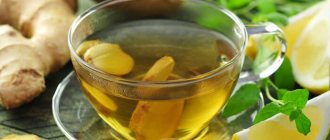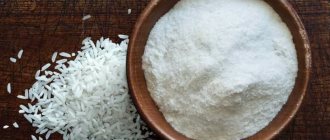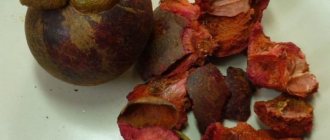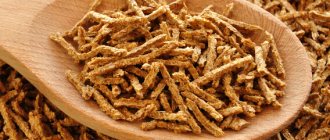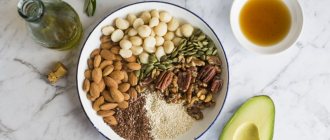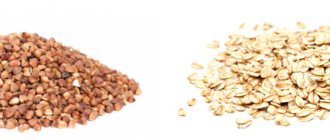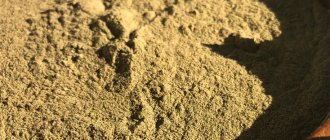Soy is one of the few plant sources of protein that contains the entire necessary set of amino acids and vitamins. The product has become a real salvation for vegetarians who need to replace animal protein with a plant-based analogue.
The so-called plant protein saturates the body for a long time and increases human functionality significantly. The only drawback of soybeans (and all legumes) is the need for long-term heat treatment. In the best case, you will have to cook it for 90 minutes and periodically add water to the pan with soybeans, in the worst case, you will have to soak it for a day in water at a certain temperature.
General characteristics of the product
Content:
- General characteristics of the product
- Beneficial features
- Chemical composition
- Use of the ingredient in cooking
- How to choose soybeans
- How to store soybeans
- Contraindications for use
- Soybean genetics
Cultivated soybeans are characterized by heterogeneous stem texture. It can be thin or thick, lowered under the pressure of the leaves or completely bare. The length of an adult plant varies from 15 cm to 2 m. The leaves are downward, the venation is pinnate, the shape is formed from 3–9 sectors. The plant produces a neat flower that is colored in a unique shade of purple.
The fruit looks traditional for a legume plant: it opens with two valves along the dorsal and ventral sutures, and contains a small number of seeds (no more than 3). The beans take on an oval shape, are resistant to cracking, and are about 4–6 cm long. The seeds are enclosed in a special valve - the pericarp, consisting of three layers. It protects the inside from the aggressive external environment and eliminates the possibility of cracking. The pericarp is quite plastic and has the ability to shrink and unclench when necessary.
The seed coat of the beans is smooth and shiny, resistant to liquids. Below it are a root and a bud. These are the main and largest organs of the soybean embryo. The beans are colored in one of the shades of yellow, orange, black, green or brown.
Preventing skin aging
Eating soy products reduces visible signs of aging, which include:
- Change in skin color.
- Wrinkles.
- Dark spots.
The hormone estrogen helps maintain the beauty and elasticity of the skin. In adulthood, its level in the body decreases. The phytoestrogens contained in soy help enhance the production of this hormone.
Beans contain vitamin E, which helps exfoliate dead skin cells and form new skin cells. It is useful to make a face mask. The beans need to be ground in a blender with a small amount of water. Apply the composition and leave for 20-25 minutes. This mask is used to moisturize the skin. To achieve the best result, it should be done every two days.
Beneficial features
Soybeans are known primarily for their record protein content and vital amino acids.
Soy is shown [1]:
- patients with gastrointestinal diseases (ulcers/gastritis);
- people with cardiovascular pathologies;
- diabetics;
- patients with diseases of the musculoskeletal system.
Soy stimulates the development of beneficial intestinal bacteria, saves people from dysbiosis and is a kind of prevention of problems with the gastrointestinal tract (GIT). This product is also necessary for women during menopause [2]. It compensates for low estrogen production and stabilizes both physical and psycho-emotional health.
Help in gaining lean muscle mass
Beans contain high amounts of protein and fiber. Consumption of soy products promotes healthy weight gain in athletes.
It is believed that animal proteins are more effective for building muscle than plant proteins. According to research:
- After training for 6 weeks, significant increases in muscle mass were observed regardless of the protein source.
- Adding soy to your diet leads to the same increase in strength and muscle as when using animal proteins.
- The main factor in building muscle strength is a combination of protein intake and strength training.
The benefit of soy for the body of athletes is the ability of vegetable protein to increase the effect of physical exercise.
Such products are an environmentally friendly and tasty addition to the diet for those who want to achieve high athletic results. The quality of the protein obtained from soy is not inferior to the protein that the body absorbs from food of animal origin.
Chemical composition
Nutritional value (per 100 grams of raw product) [3]
| Calorie content | 364 kcal |
| Squirrels | 36.7 g |
| Fats | 18 g |
| Carbohydrates | 17.3 g |
| Alimentary fiber | 13.5 g |
| Water | 12 g |
Vitamin composition (in milligrams per 100 grams of raw grain)
| Retinol (A) | 0,012 |
| Beta carotene | 0,07 |
| Thiamine (B1) | 0,94 |
| Riboflavin (B2) | 0,22 |
| Choline (B4) | 270 |
| Pantothenic acid (B5) | 1,75 |
| Pyridoxine (B6) | 0,85 |
| Folic acid (B9) | 0,2 |
| Tocopherol (E) | 1,9 |
| Biotin (N) | 0,06 |
| Nicotinic acid (PP) | 9,7 |
Nutrient balance (in milligrams per 100 grams of raw grain)
| Macroelements, mg | |
| Potassium (K) | 1607 |
| Calcium (Ca) | 348 |
| Magnesium (Mg) | 226 |
| Sodium (Na) | 6 |
| Sulfur (S) | 244 |
| Phosphorus (P) | 603 |
| Chlorine (Cl) | 64 |
| Microelements, mg | |
| Aluminum (Al) | 0,7 |
| Bor (V) | 0,75 |
| Silicon (Si) | 177 |
| Iron (Fe) | 9,7 |
| Iodine (I) | 0,0082 |
| Cobalt (Co) | 0,312 |
| Manganese (Mn) | 2,8 |
| Copper (Cu) | 0,5 |
| Molybdenum (Mo) | 0,099 |
| Nickel (Ni) | 0,304 |
| Strontium (Sr) | 0,067 |
| Fluorine (F) | 0,12 |
| Chromium (Cr) | 0,016 |
| Zinc (Zn) | 2,01 |
Use of the ingredient in cooking
Cooking soybeans is a very lengthy process. The beans are soaked for at least 15 hours, washed in cool water and boiled for about 3-4 hours until tender. Only fruits that have undergone many hours of preparation become edible (raw beans are difficult to even bite through).
Among the products containing soy are:
- tofu cheese;
- yogurt (yofu);
- chocolate;
- cereal protein bars;
- ice cream;
- milk.
All these products are low in calories and can be included in the diet.
After heat treatment, soybeans become soft, slightly crumble and filled with a sweetish, nutty flavor. Boiled beans can be eaten as a side dish, added to salads, served with meat and fish dishes, and even used as a dessert.
In cooking, soybean acts as a vegetable substitute for meat. The ingredient is used to create sauces, oils and drinks. The special extract secreted by soybeans makes the dish incredibly tasty. The combination of tart and sweet nutty notes adds a certain sophistication to the food.
You can also cook from soy:
- pate;
- homemade sausage;
- vegetable stew;
- appetizer with the addition of meat or fish ingredients.
Smooth Pho Soup Recipe Using Soy Sprouts
We will need the following ingredients:
- boiled beef – 250 g (can be replaced with chicken);
- ginger – 50 g;
- onions – 2 pcs.;
- sauce for fish dishes - to taste;
- cinnamon – 2 pcs.;
- star anise – 5 pcs.;
- black peppercorns - to taste;
- rice noodles – 150 g;
- soybean sprouts – 150 g;
- beef broth – 1 l;
- green onions – 4 stalks;
- herbs and spices - to taste.
Preparation
Cut the vegetables into small cubes and chop the selected greens. Pour fish sauce into the meat broth, add onion, ginger, cinnamon, star anise and your favorite spices. Constantly taste the dish to understand the specific taste. As soon as you find the ideal dosage, stop and move on to the next stage of cooking. Bring the spicy broth to a boil and leave to simmer for about 20-30 minutes - this will allow the broth to absorb the flavor of each spice.
Strain the finished broth, add rice noodles and return to medium heat for 5-7 minutes. Remove the finished noodles with a slotted spoon and place on a plate, adding soy sprouts and boiled beef. Pour the dish with meat broth, add a drop of lime or lemon and serve.
Summarize
- Soy has several health benefits such as improving cholesterol levels, fertility rates and relieving menopause symptoms.
- However, it remains a controversial product as some existing animal studies suggest that it may be linked to breast cancer, poor thyroid function and it may interfere with male hormones.
- However, human studies show different results.
- Overall, the benefits of including soy in your diet likely outweigh any potential harm, so you can safely consume whole or fermented soy products.
The article was prepared by experts for informational purposes only. It should not be used as a guide for treating medical conditions and is not a substitute for professional medical advice, diagnosis, or treatment. In case of illness or any symptoms, you should always consult a doctor and not self-medicate.
Tags: Soy
About the author: Alexander Fedorov
Candidate of Biological Sciences, biologist, nutrition expert. Graduated from Stavropol State University with a degree in Biology at the Faculty of Biology and Chemistry.
- Related Posts
- Walnuts: benefits and harm to the body
- Almonds: benefits and harms for the human body
- What are the benefits of coconut for the human body?
« Previous entry
How to choose soybeans
The sale of soybeans is no different from the sale of our usual peas or beans. The product is packaged, packed in polyethylene, cardboard or craft paper containers and transported to the required retail outlet. Make sure that the package contains only soy. There should be no foreign objects such as sprouts, debris or stems.
The color of soybeans can be varied - from black to snow-white. The quality and taste of soybeans are absolutely independent of the shade, so focus on the aesthetic appearance of the ingredient.
You can often see okara in stores. This is a yellowish wet mass, which in structure resembles cottage cheese. Okara is a product made from boiled and ground soybeans. The mass is absolutely tasteless and does not have a unique smell. Okara can be stored in the refrigerator for quite a long time even after opening the package. The ingredient can be used to prepare cutlets, chops, bake bread or desserts. Try replacing traditional cottage cheese with okara in one of the particularly successful recipes and appreciate the taste. The peculiarity of soy is that it takes on the taste and aroma of another dish, mimics and enhances it.
Contraindications for use
Soy is prohibited from being included in the diet of patients with urolithiasis. Beans contain specific substances (oxalates) that stimulate the formation of new stones and worsen the current course of the disease [4].
Pathologies that can be caused by excessive consumption of soy include the following [5]:
- asthma;
- conjunctivitis;
- Alzheimer's disease,
- dermatitis,
- eczema;
- acceleration of the aging process;
- miscarriage;
- disruptions in the development and formation of the fetal brain during pregnancy.
Experts do not recommend giving soy to young children. The body may react adversely to the product and respond with thyroid disease or the development of an allergic reaction [5].
Composition and calorie content of soybeans, vitamins and minerals
Soybeans are famous for their high content of riboflavin, magnesium, calcium, manganese, and thiamine. However, the fruits of this plant contain phytates, which negatively affect the body’s absorption of nutrients. But the most important thing is that it is a protein product. Polyunsaturated fatty acids are also present in large quantities in soybeans, so it is not recommended to get carried away with soybean oil, so as not to provoke an exacerbation of chronic diseases.
The calorie content of 100 g of product is 381 units.
Soybean genetics
The genetic history of soybeans begins on January 14, 2010. It was on this day that an article about the genome of this legume species was published in the journal Nature. Scientists were able to determine the DNA sequence of the plant’s genome and discovered many genes capable of encoding protein - more than 46 thousand. This figure is 70% higher than that of Tal’s rhizome (the plant predecessor of soybean) [6].
Soybeans are one of many crops that have undergone genetic modification. It is genetically modified, and not plant-based, soy that is now included in most food products. Scientists who discovered the amazing properties of genes gradually began to introduce beans into everyday use, providing the public with new information about the quality, safety and benefits of using soybeans.
In 2006, 92% of all US cultivated areas were sown with this particular plant component [6]. Imports grew at warp speed, but the world was only able to partially accept the genetically modified organism (GMO). People were afraid of this abbreviation, protested against artificial products and boycotted manufacturers.
Agronomists have benefited from genetically modified soybeans, because such a product has become much easier, faster and cheaper to grow. At the same time, the price of the plant remained stable.
Research and development continues to this day. Some countries are moving away from soy and are using special IP certification to track the supply of the traditionally grown plant ingredient. Manufacturers undertake to provide information about the organic or genetic origin of the components included in the composition. Unfortunately, many manufacturers have begun to speculate on the term “organic,” but the modern consumer does not pay attention to bright inscriptions and labels, but simply carefully studies the composition.
Possible risks associated with the consumption of genetically modified products
There are three main categories of risks: food, environmental and agrotechnical [7]. Let's look separately at the first two.
Nutritional risks
Best materials of the month
- Coronaviruses: SARS-CoV-2 (COVID-19)
- Antibiotics for the prevention and treatment of COVID-19: how effective are they?
- The most common "office" diseases
- Does vodka kill coronavirus?
- How to stay alive on our roads?
Frequent and long-term consumption of genetically modified foods leads to a decrease in the protective function of the immune system. The transgenic protein can cause an allergic reaction and act as a stimulating allergen for other infections and pathologies.
Scientists note that people who consume artificial products are less susceptible to antibiotics, which complicates the treatment process. With soy, specific marker genes enter the body, which block the medicine, reduce its effectiveness and can lead to human death. Artificial products accumulate herbicides and increase the risk of developing cancer pathologies [8].
Benefit or harm?
The vegetable protein contained in soybeans is similar in quality to the proteins of meat, milk and eggs. Thanks to this, soy can quickly cope with the feeling of hunger without rewarding you with extra calories. Soy protein contains all the essential amino acids found in animal proteins.
A deficiency of these substances can lead to a decrease in immunity and blood pressure. Our body needs amino acids to renew cells, tissues and organs. Therefore, if you follow a vegetarian diet, be sure to include soy-based products in your menu. For example, residents of Japan, many of whom are vegetarians, eat on average about 27 kg of soy per year, while Europeans eat only 3 kg. By the way, a few years ago doctors explained the high life expectancy of the Japanese by the presence of a large amount of soybeans on their table. It was believed that soy reduced the level of bad cholesterol in the blood and protected against cancer. However, recent studies have shown that rumors about the usefulness of soy are greatly exaggerated. Unfortunately, beans are unable to remove excess cholesterol from the body and cope with malignant tumors.
